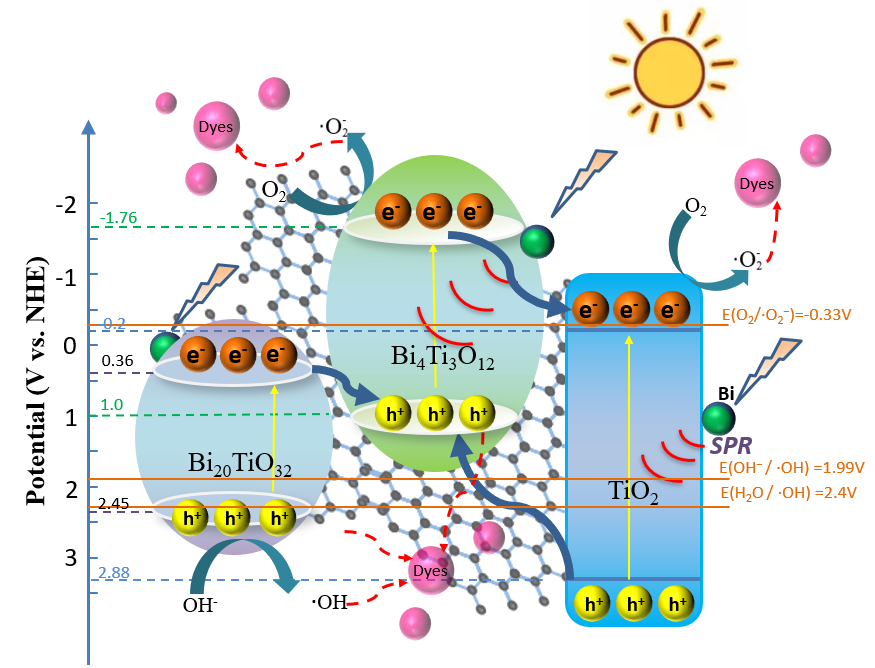Recently, Dr. Yao Liangtao, an ultra-precision optical manufacturing innovation team led by Academician Zhuang Songlin and Professor Zhang Dawei of the School of Optoelectronics of our university, published a report entitled "BixTiyOz/ "Electrospun Bi-decorated BixTiyOz/TiO2 flexible carbon nanofibers and their applications on degradating of organic pollutants under solar." radiation", Dr. Yao Liangtao is the first author and Professor Zhang Dawei is the corresponding author. Sun Changpo, researcher of the Standard Quality Center of the State Food and Material Reserve Administration, Professor Li Guisheng and Professor Lian Zichao from the School of Materials and Chemistry of our university, and others are co-authors of the paper.
As an emerging organic pollutant and toxin reduction method, photocatalytic technology is increasingly used in the field of organic pollutant and toxin reduction because of its advantages of high efficiency, economy, environmental protection and safety. However, in the photocatalytic process, there may be problems such as low specific surface area of photocatalyst and inability to effectively contact with reactants, narrow spectral absorption range, and high photogenerated charge recombination rate, which limits the photocatalytic activity of photocatalyst. In the traditional photocatalytic degradation process, the photocatalyst is dispersed in the reaction substrate in a powder state, resulting in the photocatalyst powder being easily agglomerated and inhibiting the photogenerated charge separation. Moreover, the photocatalyst separation after the reaction generally needs to go through the centrifugation or filtration process, which requires a lot of energy and time, and is easy to cause secondary pollution, which limits their large-scale application. The flexible photocatalytic materials synthesized in this paper solve this problem well.
In this paper, flexible film-like photocatalytic carbon nanofiber composites (Bi/BixTiyOz-TiO2/CNFs) were prepared by electrospinning pan (polyacrylonitrile) dissolved with Bi(NO3)3·5H2O (bismuth nitrate pentahydrate) and TBT (butyltetrayl titanate). The material is a flexible film with nanoscale fiber structure, excellent photocatalytic activity, and can be easily removed from the substrate after the end of the reaction, avoiding time-consuming and energy-intensive separation processes. The materials prepared in this paper require cheap and easy raw materials and simple preparation methods, which provide a new green method for removing organic pollution and toxins.

Schematic diagram of the preparation process of flexible photocatalytic carbon nanofiber composites (Bi/BixTiyOz-TiO2/CNFs)

Schematic diagram of the photocatalytic mechanism of flexible photocatalytic carbon nanofiber composites (Bi/BixTiyOz-TiO2/CNFs)
Article information:
https://www.sciencedirect.com/science/article/pii/S1005030222008179?utm_campaign=STMJ_AUTH_SERV_PUBLISHED&utm_medium=email&utm_acid=264257752&SIS_ID=&dgcid=STMJ_AUTH_SERV_PUBLISHED&CMX_ID=&utm_in=DM318487&utm_source=AC_